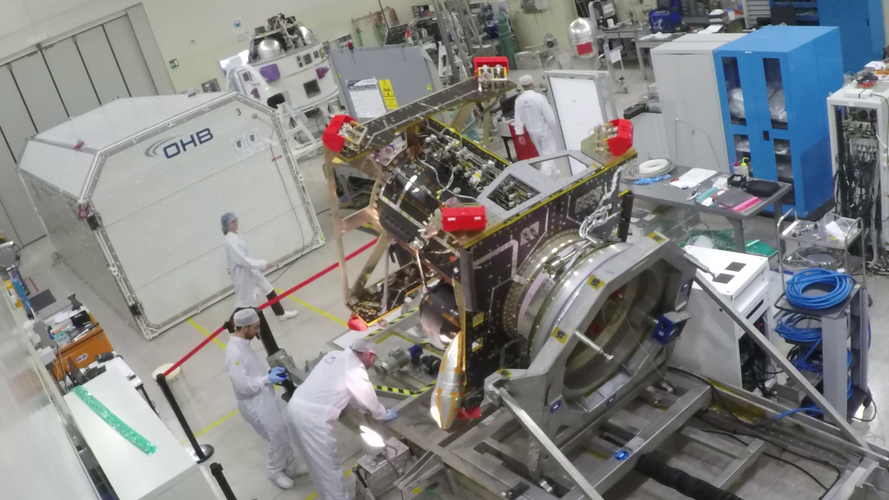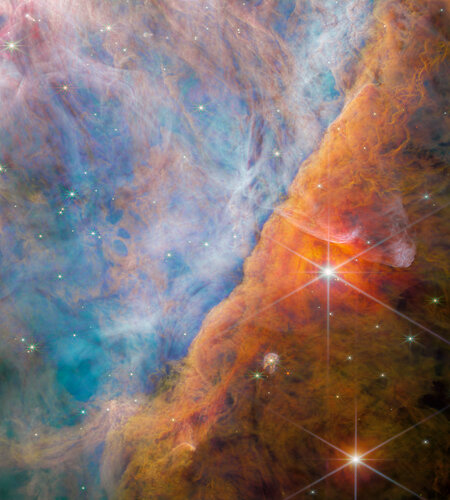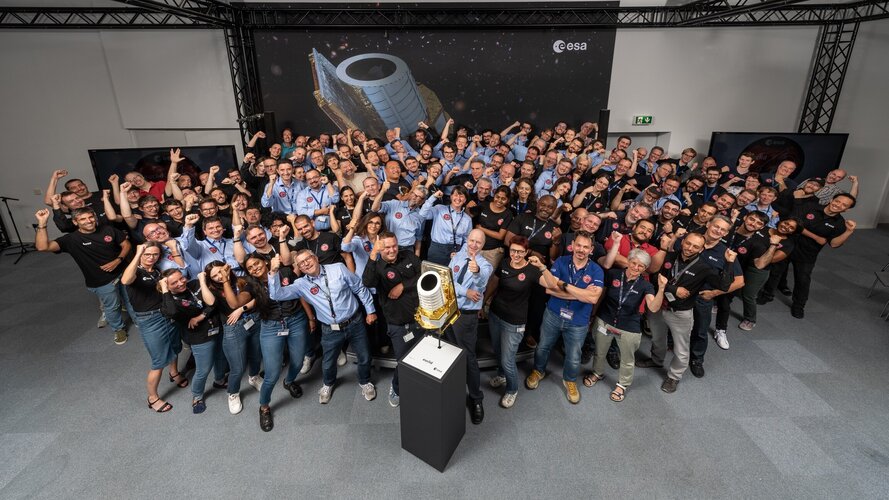
Copernical Team
Hera Propulsion Module leak test – time-lapse
 Video:
00:02:23
Video:
00:02:23
ESA’s Hera mission for planetary defence will perform a close-up survey of the Dimorphos asteroid in deep space. But first Hera needs to cross millions of kilometres of space to get there. That is the task of Hera’s Propulsion Module, forming around half of the overall spacecraft, which has been prepared by Italy’s Avio company. Formed of a central tube plus a supporting structure, the Module has been fitted with propellant tanks, piping and thrusters (inside the red protective covers). But before it can be joined to Hera’s other element, the Core Module, this Propulsion Module had
Week in images: 26-30 June 2023

Week in images: 26-30 June 2023
Discover our week through the lens
Mission control is GO for Euclid launch
 Image:
Euclid ore-launch briefing complete at ESA's mission control
Image:
Euclid ore-launch briefing complete at ESA's mission control Space to empower rural food producers

ESA has strengthened their partnership with the UN International Fund for Agricultural Development (IFAD) to help vulnerable small-scale food producers not only increase their ability to grow food but adapt to climate change by using state-of-the-art Earth observation data.
Australia-first communications network paves the way for high-speed data in space
 The $6.5 million project, which has received a $4.4 million grant from the Australian Space Agency, $500,000 each from the Western Australian Government and The University of Western Australia, will employ a new technology that uses super-fast lasers to talk to satellites and spacecraft.
It's called 'free-space optical communications', and it's 1000 times faster than the radio communicatio
The $6.5 million project, which has received a $4.4 million grant from the Australian Space Agency, $500,000 each from the Western Australian Government and The University of Western Australia, will employ a new technology that uses super-fast lasers to talk to satellites and spacecraft.
It's called 'free-space optical communications', and it's 1000 times faster than the radio communicatio Australia scraps billion-dollar satellite program
 Australia on Friday said it was axing a billion-dollar plan to develop a series of space satellites, as it tries to cut costs amid an economic slowdown and cost-of-living crisis.
The Aus$1.2 billion (US$770 million) National Space Mission for Earth Observation was unveiled just last year and hailed as a key plank in developing an Australian space industry.
The programme's aim was to desi
Australia on Friday said it was axing a billion-dollar plan to develop a series of space satellites, as it tries to cut costs amid an economic slowdown and cost-of-living crisis.
The Aus$1.2 billion (US$770 million) National Space Mission for Earth Observation was unveiled just last year and hailed as a key plank in developing an Australian space industry.
The programme's aim was to desi Earth from Space: Southwest Netherlands
 Image:
Rotterdam and part of the Zeeland province in southwest Netherlands are featured in this radar image acquired by Copernicus Sentinel-1.
Image:
Rotterdam and part of the Zeeland province in southwest Netherlands are featured in this radar image acquired by Copernicus Sentinel-1. Imagine walking on Hera’s asteroid

The team working on ESA’s Hera asteroid mission has glimpsed its destination. Last September NASA’s DART mission returned images of the boulder-strewn Dimorphos moonlet just before impacting it, in an audacious and ultimately successful attempt to shift its orbit around its parent asteroid Didymos.
Following on from DART, Hera will carry with it a pair of shoebox-sized ‘CubeSats’ that conclude their own observations by landing on Dimorphos. Team members have been using DART images to help visualise this process of touchdown. And in the process they can't help but imagine: what would it be like for human
Euclid: preparing for launch

ESA’s mission Euclid is getting ready for lift-off on a SpaceX Falcon 9 from Cape Canaveral in Florida, USA, with a target launch date of 1 July 2023.
Our galaxy seen through a new lens: Neutrinos detected by IceCube
 Our Milky Way galaxy is an awe-inspiring feature of the night sky, viewable with the naked eye as a horizon-to-horizon hazy band of stars. Now, for the first time, the IceCube Neutrino Observatory has produced an image of the Milky Way using neutrinos-tiny, ghostlike astronomical messengers. In an article to be published tomorrow, June 30, in the journal Science, the IceCube Collaboration, an in
Our Milky Way galaxy is an awe-inspiring feature of the night sky, viewable with the naked eye as a horizon-to-horizon hazy band of stars. Now, for the first time, the IceCube Neutrino Observatory has produced an image of the Milky Way using neutrinos-tiny, ghostlike astronomical messengers. In an article to be published tomorrow, June 30, in the journal Science, the IceCube Collaboration, an in 
